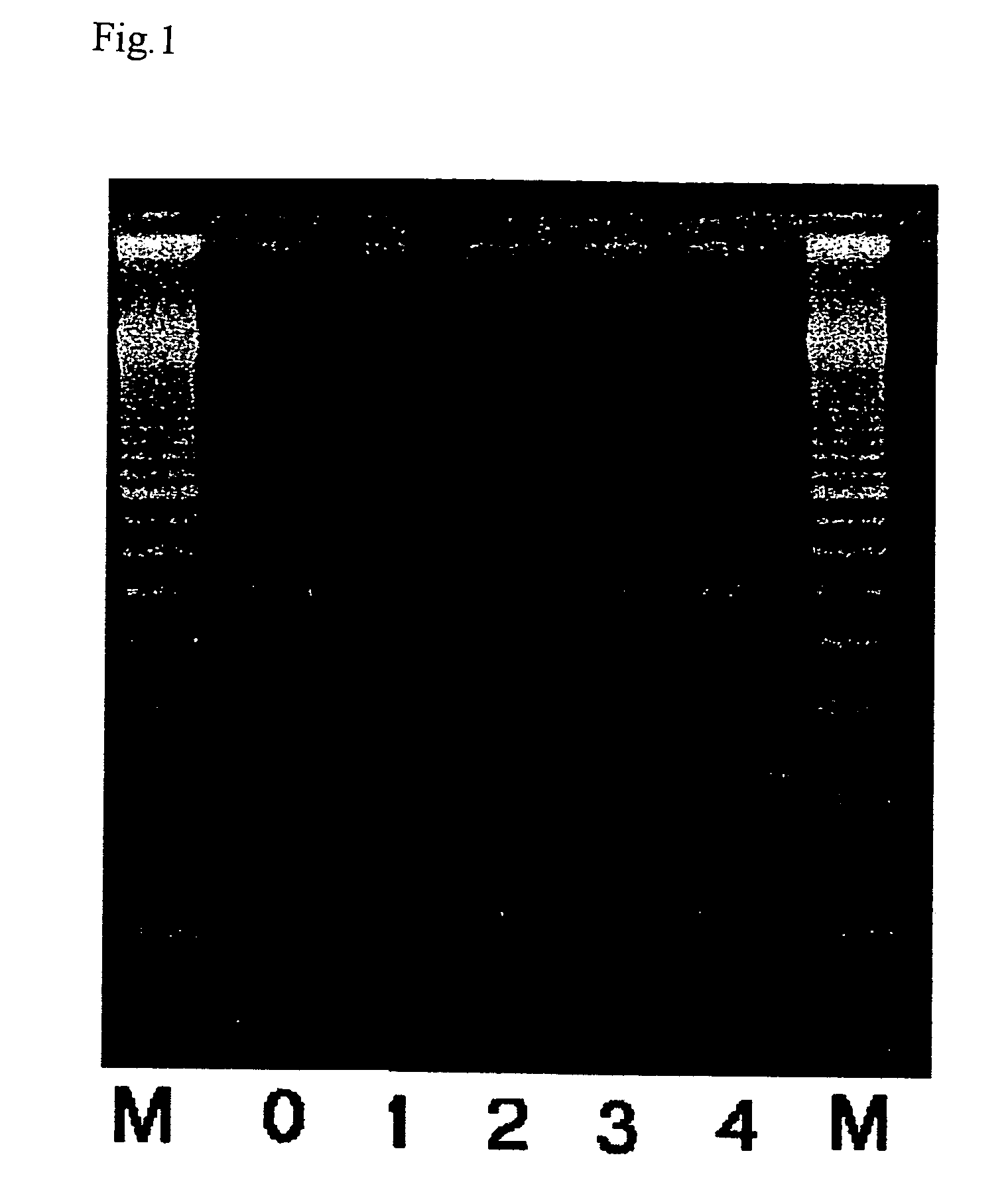Method of reusing DNA-immobilization substrate
a technology of immobilization substrate and dna, which is applied in the field of reusing dna-immobilization substrate, can solve the problems of inability to use most used substrates, high cost of dna-immobilization substrate,
- Summary
- Abstract
- Description
- Claims
- Application Information
AI Technical Summary
Benefits of technology
Problems solved by technology
Method used
Image
Examples
example 1
[0042]A diamond substrate was used. The substrate mentioned below is the diamond substrate.
[0043]The substrate with a DNA immobilized thereon was put into 6 N hydrochloric acid and reacted at 95° C. for 5 hours to hydrolyze it. Then, this was washed (about 3 times). In this condition, the substrate had a hydrochloride. Therefore, this was dipped in a 0.1 N potassium hydroxide solution to remove the chloride ions from it. With that, the substrate was washed with water (about 3 to 5 times) to thereby make it have an amino group-modified surface.
[0044]0.1 mmols of succinic acid chloride was added to 1 ml of chloroform, and the reusable amino group-modified substrate was inserted into it and reacted at room temperature for 30 minutes. Next, the substrate was washed with chloroform, dried, then dipped in pure water for 1 hour, and then finally washed with pure water (about 3 to 5 times) to make it have a succinic acid-modified surface.
[0045]0.1 mmols of water-soluble carbodiimide and 0.1...
PUM
| Property | Measurement | Unit |
|---|---|---|
| spectroscopy | aaaaa | aaaaa |
| chemically-stable | aaaaa | aaaaa |
| thermal conductivity | aaaaa | aaaaa |
Abstract
Description
Claims
Application Information
 Login to View More
Login to View More - R&D
- Intellectual Property
- Life Sciences
- Materials
- Tech Scout
- Unparalleled Data Quality
- Higher Quality Content
- 60% Fewer Hallucinations
Browse by: Latest US Patents, China's latest patents, Technical Efficacy Thesaurus, Application Domain, Technology Topic, Popular Technical Reports.
© 2025 PatSnap. All rights reserved.Legal|Privacy policy|Modern Slavery Act Transparency Statement|Sitemap|About US| Contact US: help@patsnap.com

